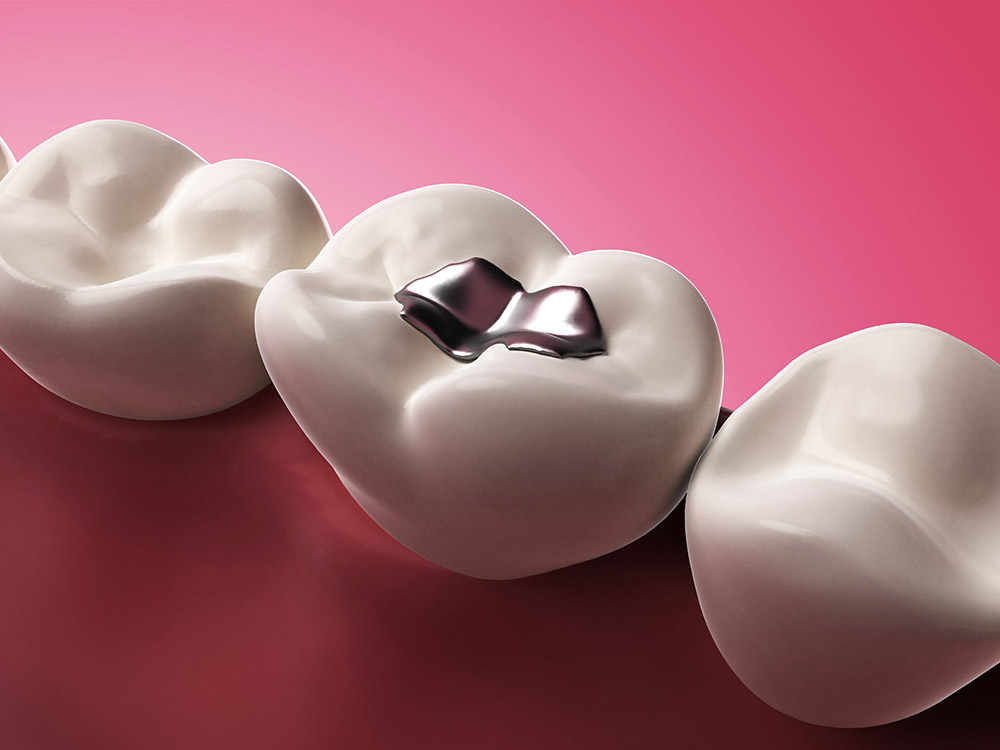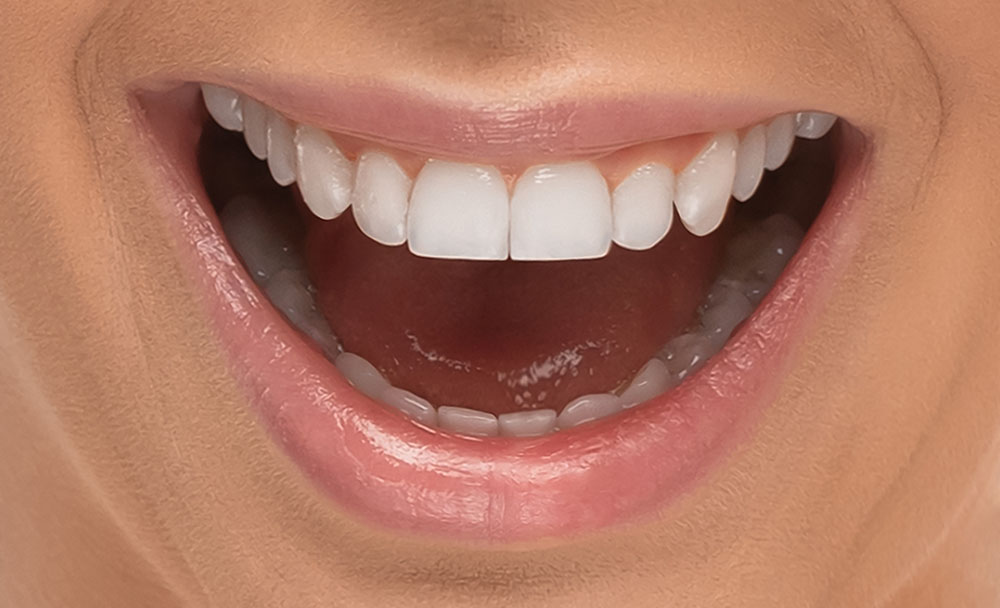
The author of the article
Boris Lipovetskiy, DMD, 31 years experience
Since the 1900s, dental amalgam fillings have been used in dentistry. They are generally considered a quality and durable material for tooth restoration. However, they have drawbacks – potential risks due to mercury content and low aesthetics due to the material's grey color. Which material is safer? Which is more aesthetically pleasing – amalgam or composite restorations? What are the pros and cons of these materials? We will answer these questions in the article.
Table of Contents
What are Dental Amalgam and Composite Fillings?
Amalgam is a blend of heavy metals (silver, tin, copper, zinc) and mercury in a 1:1 ratio. Mercury transforms the metal mix into a pliable material. Tin slows the hardening process. Silver ensures hardness after drying, while zinc slows down oxidation and corrosion. Copper provides a tight fixation of the material.

Composed of two materials – an organic base and an inorganic filler. The organic base consists of acrylic resins that provide the necessary consistency, flexibility, and strength after hardening. The inorganic filler, made of quartz, ceramic, and silicate particles, enhances wear resistance and creates a natural shade.


Which is better – amalgam or composite filling?
Boris Lipovetskiy
Dentist with 30 years of experience
According to research studies, composite is the better choice. It is more aesthetic, matching the color of the enamel. Also, placing such fillings is less traumatic as it does not require the grinding down of healthy tooth tissue.
In our clinic, we use light-cured composite, which hardens under a polymerization lamp. Having used this material for a long time, we are confident that it does not darken over time, doesn't shrink post-hardening, is more durable, and offers a wide range of shades.
Advantages and Disadvantages of Dental Amalgam

-
Durability: Restorations last for 10-15 years
-
Lower Cost: The price of amalgam is lower than that of composite
-
Low Aesthetics: Due to its gray color, amalgam fillings are quite noticeable, especially when placed on front teeth
-
Thermal Conductivity: Metals heat up from hot foods, leading to increased tooth sensitivity to temperatures
-
Shrinkage During Hardening: The material compresses as it dries, potentially creating voids where secondary infection can develop
-
Expansion Under Heat: Hot foods cause the metals in amalgam to expand, increasing pressure on tooth tissues and gradually leading to their degradation
-
Traumatic Installation: Amalgam does not adhere well to teeth. To ensure a reliable bond, dentists have to remove more tooth tissues, potentially harming healthy areas
-
Mercury Toxicity: Studies show that a large number of amalgam fillings can lead to mercury accumulation in surrounding tissues, potentially causing inflammation, neurological, and cardiovascular diseases
-
Galvanic Syndrome: The reaction between metals in the mouth can cause a metallic taste, burning, other mucosal damage, and dry mouth
-
Risk of Allergies: Copper and mercury in amalgam can sometimes cause allergic reactions
-
Lengthy Installation Process: Complete hardening of amalgam takes 6-8 hours. Additionally, two clinic visits are required – the dentist polishes the restoration the day after filling
Advantages and Disadvantages of Composite Fillings

-
High Aesthetics: The shade of the filling can be matched to the color of the enamel, making the restoration invisible even on front teeth
-
Reliable Fixation: The material firmly bonds with tooth tissues, eliminating gaps between the filling and dentine
-
Non-Traumatic Installation: The dentist only removes the areas affected by caries, preserving healthy regions
-
No Toxic Components: Composite does not contain mercury or other metals that could cause irritation or allergies
-
Strength: Composite withstands chewing pressure without developing micro-cracks
-
Stable Size of the Filling: After hardening, the composite does not shrink or expand when heated. This prevents increased pressure on healthy tooth walls, reducing the risk of micro-cracks and voids
-
No Temperature Sensitivity: Composite does not conduct heat, so there's no increased sensitivity to hot foods
-
Shorter Lifespan: Composite restorations last 5-10 years
-
Higher Material Cost: Composite is more expensive than amalgam, but its advantages justify the cost
Comparison of Amalgam & Composite Fillings
| Amalgam | Composite | |
|---|---|---|
| Aesthetics | Grey-colored material. Highly visible, can detract from the smile's beauty | Shade can be matched to tooth enamel, making it unnoticeable |
| Lifespan | 10-15 years | 5-10 years |
| Installation Duration | Requires two clinic visits. Amalgam hardens over 6-8 hours | Completed in one appointment. Fixation, hardening, and polishing take about 15-20 minutes |
| Installation Trauma | May require grinding healthy tissues for secure fixation | Can be securely fixed even in small carious cavities without affecting healthy areas |
| Material Shrinkage | Volume may decrease upon hardening, potentially leading to voids and reinfection | Does not change volume during hardening, ensuring tight contact with dentine |
| Reaction to Temperatures | Metal conducts heat, increasing tooth sensitivity to temperatures. Also expands with hot food, increasing pressure on tooth walls | Metal conducts heat, increasing tooth sensitivity to temperatures. Also expands with hot food, increasing pressure on tooth walls |
| Material Safety | Mercury and copper may cause allergies | Free from strong allergens or toxic components |
Why We Perform Amalgam Removals?
Amalgam fillings should be removed if:
- The restoration is large (covering one or several chewing cusps).
- Secondary caries has developed.
- Healthy tooth walls are too thin.
- The restoration detracts from the beauty of the smile.

Boris Lipovetskiy
Dentist with 30 years of experience
«I am a member of the International Academy of Oral Medicine and Toxicology and an expert in mercury-containing filling removal. The procedure is safe and quick. I have over 30 years of experience in amalgam removal.
This restoration can be replaced with another modern and safe method; a more aesthetic and reliable composite restoration. At Advanced Dental Wellness Center, we perform non-traumatic dental treatment and restoration at reasonable prices.»
FAQ
After installing a light-cured composite filling, you can drink immediately, but it is recommended to wait 2 hours before eating.


